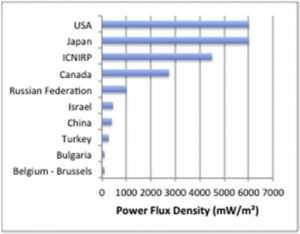https://doi.org/10.1016/j.buildenv.2019.106324

9. Discussion and conclusion
The breadth of peer-reviewed scientific research demonstrating biological effects of radiofrequency radiation (RFR) below current guidelines and standards highlights the need to further develop and codify pertinent building technology standards and guidance. Public health risks, accessibility needs, industrial liability and international precautionary actions indicate that RFR is an important performance parameter in building science.
Parallel with rapid innovation in wireless technologies, and the increasing RFR both inside and outside building structures, building science must also innovate to include alternative, physically connected technologies and systems. This is important to achieve accessibility and a building’s success. Ensuring that the health and safety of occupants are not compromised requires those in the building science professions to develop and apply needs and means assessments, as well as best practices for methods and models for communications, with RFR wireless technology as a less-preferred option.
Research and knowledge transfer are needed to develop, publish, and encourage compliance with explicit directions for the integration of wired communications technologies in the design, planning, engineering, construction, operation and life cycle of a building.
Building science has embraced ecology and sustainability as core tenets in building performance. Currently, modern technologies minimizing RFR exposures offer an under-addressed opportunity for “smart” buildings also to be healthy – for their occupants, and for natural and built environments.
Excerpt: For any systems that are not “wired,” architects, builders, owners and inhabitants all must operate within constraints of regulated RFR exposure levels. RFR exposure limits vary among jurisdictions, with the highest permitted personal exposures in the U.S.A. and Japan. Many countries adhere to the International Commission on Non-Ionizing Radiation Protection (ICNIRP) recommended guidelines for power flux density, electrical fields and SAR for various frequencies [196]. Exposure limits range widely, for example in terms of power density at 900 MHz, as summarized in Fig. 3.
 Fig. 3. International RFR power flux density exposure limits at 900 MHz [197,198].
Fig. 3. International RFR power flux density exposure limits at 900 MHz [197,198].
